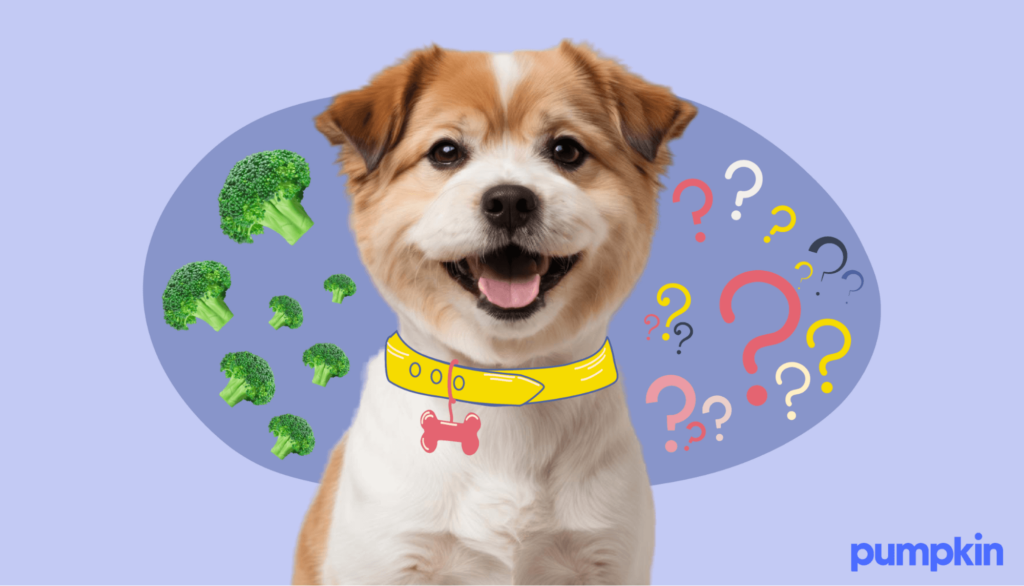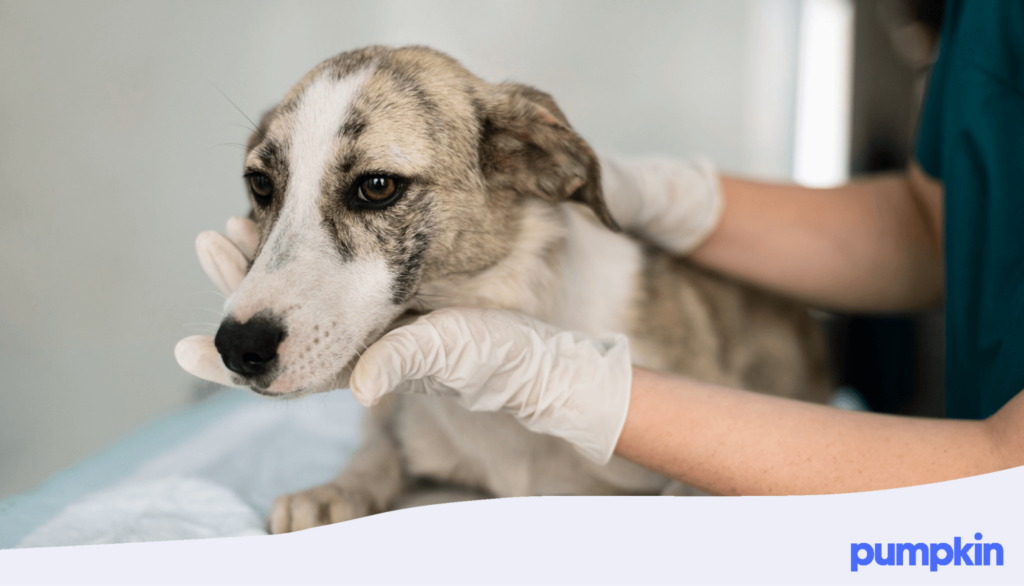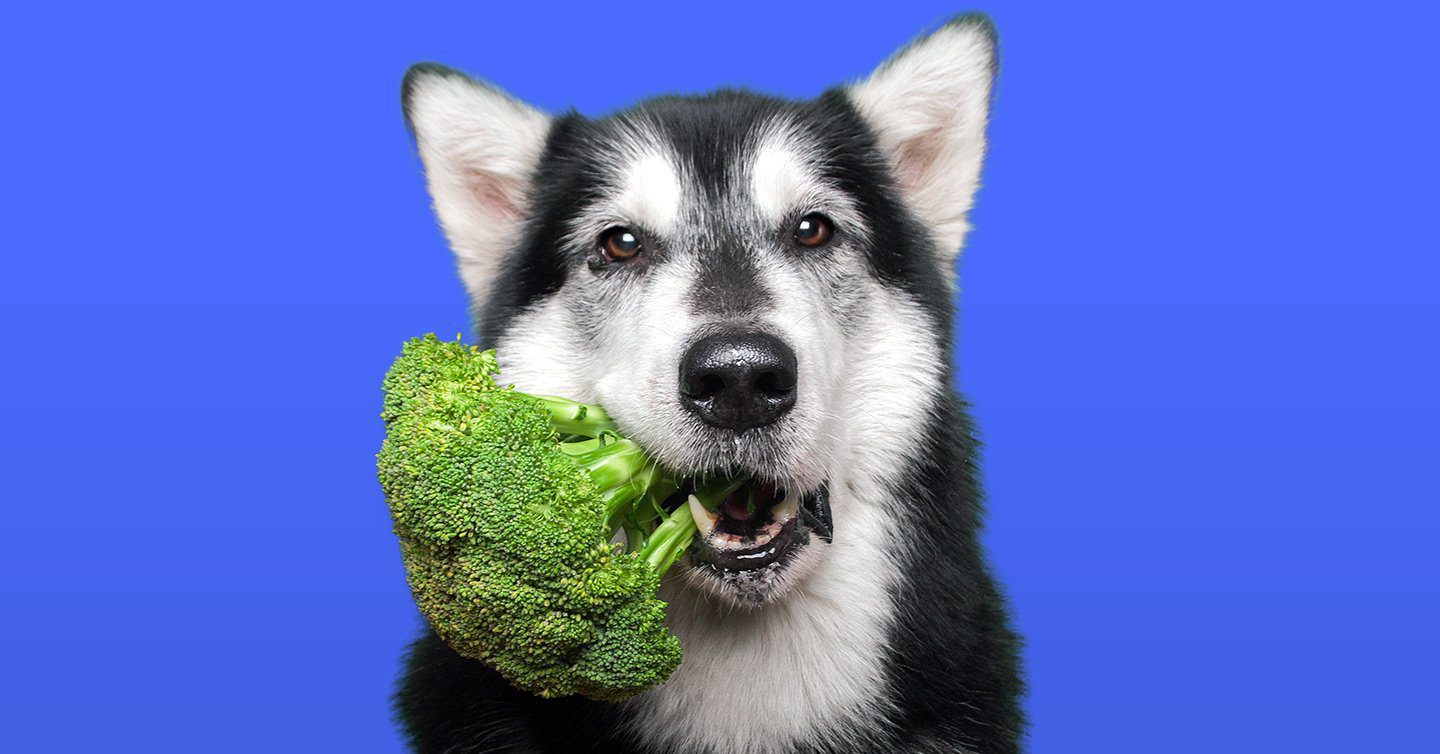Key Points:
- Yes, dogs can eat broccoli, but it should be served in small quantities.
- Broccoli provides fiber, vitamin C, and vitamin K, but molecules called isothiocyanates can also cause gas, stomach upset, and bloating in large amounts.
- Avoid feeding dogs the broccoli stalk because it can be a choking hazard.
We all know greens are good for humans, and most of us could benefit from more broccoli in our diets. But, what about pups? Can dogs eat broccoli, too?
Broccoli is generally safe for adult dogs when offered as an occasional snack and prepared the right way. This cruciferous veggie can be a healthy dog treat alternative, so if you want to green up your pet’s diet, broccoli is a smart option.
However, just like other fruits and vegetables, too much of a good thing can be problematic. And that’s especially true of cruciferous veggies like broccoli. A large serving can cause nausea, gas, bloating, or diarrhea.
To help you make the right decision, we’ve put together a quick guide to broccoli serving sizes, benefits, and risks.
The health benefits of broccoli for dogs
For most dogs, broccoli is safe to eat in small portions. It’s low in calories and high in fiber to keep your dog’s digestive system moving. It’s also packed with essential vitamins and minerals that support the overall health of your dog, including:
- Vitamin C
- Vitamin K
- Folic Acid
- Magnesium
- Sodium
- Potassium
Broccoli florets, and all cruciferous vegetables for that matter, also contain molecules called isothiocyanates, which have anti-inflammatory properties.
However, these same molecules can cause nausea, gas, bloating, and diarrhea in dogs. So, if your dog overeats broccoli, they may start to feel very uncomfortable. And depending on your tolerance for dog fats, you might get pretty uncomfortable, too.
How much broccoli can a dog eat?
Dogs have unique nutritional requirements and require a balanced diet. In general, extra snacks should be no more than 10% of their daily food intake. Knowing this, you can look at the recommended daily calories for your pup to figure out how many snacks and treats they can have.
For instance, a 15-pound dog, such as a Bichon Frise, should consume up to 452 calories per day. That means they can have about 45 calories in treat form. (Whether your dog thinks that veggies like broccoli are a “treat” or a mean joke, we can’t say.)
Larger breeds that weigh closer to 80 or 90 pounds, such as Boxers and German Shepherds, can enjoy about 160 calories worth of treats (for a recommended 1,670-calorie diet). However, that would equal about four cups of cooked broccoli, which is too much even for big dogs.
With broccoli, 10% is too much
While the 10% treat rule is generally a safe bet when measuring portions of fruits and veggies for dogs, you should be more conservative with broccoli. As one-half cup of cooked broccoli florets contains just 20 calories, you could feed your Bichon Frise a full cup without breaking that 10% limit. A full cup might not have too many calories, but it’s still a lot of greens for a small dog. As for the Boxers and German Shepherds mentioned, four cups of broccoli would be overdoing it.
Because the isothiocyanates in broccoli can cause an upset stomach in dogs, start with a small floret or two when chopping up veggies for a salad. Make sure to wash the veggies and cut them into appropriate sizes for your pup. Different dogs will have different sensitivities to isothiocyanates, so take it easy at first.
Besides, unless your pup really loves their greens, they may prefer a few other healthy dog snacks like a tasty hard-boiled egg or a few juicy blueberries.
Remember, even if you stick to these limits with your dog, they still may have a negative reaction. Always speak to your vet before changing your dog’s diet.
Can puppies eat broccoli?
If you have a puppy, it’s best to wait until they’re more mature before offering them broccoli. The green vegetable is high in fiber, but for small pups, it can cause a sore belly.
Puppies need a very specific diet to keep them growing strong, plus, their tummies are super sensitive. Introducing human food too early is a recipe for diarrhea or vomiting. Also, broccoli has a firm stalk that can be a choking hazard for pups and small dogs.

Remember, if your puppy does sneak a piece of broccoli, there’s no need to panic. Just keep an eye on them to make sure they don’t react poorly.
Pet Pro Tip: If you have a dog that is prone to ‘snacksidents’ – you should consider getting a dog insurance plan as soon as possible. It can help you afford the best care in the future by covering eligible vet bills for digestive illnesses, toxic ingestion, and more.
How to feed your dog broccoli
Broccoli can be steamed, boiled, or served raw as a snack. Add it to their meal or serve it on its own as a yummy dog treat.
When cut into bite-sized pieces and thoroughly washed, every part of the broccoli crown is safe to eat — cooked or raw. However, stems can be a choking hazard, so steaming and chopping this veggie is the safest option.
Here are some serving ideas for pet parents:
- Raw: Add a few raw broccoli florets to your dog’s regular food.
- Cooked: Whether it’s frozen or fresh broccoli, cooking, steaming, or roasting is fine as long as you aren’t using seasonings or oil.
- Mashed: Steam broccoli, peas, and carrots, then mash and combine with brown rice and chicken for your dog’s main meal.
- Puréed: Purée broccoli and dog-friendly fruits and veggies with water or plain Greek yogurt. Freeze the mixture in ice-cube trays to make a pupsicle. Make sure the yogurt is unsweetened and free of added sugar or xylitol.
Some dogs don’t like the taste and texture of broccoli. In this case, you can mash or purée it with other foods. However, don’t try too hard. We don’t recommend forcing broccoli on any picky eaters in the house — at least, not the four-legged ones.
Lastly, don’t forget that sauces and seasonings such as onion and garlic can be very dangerous for pets, so simple is always best.
What are the downsides of broccoli?
This green vegetable should be served in moderation, as too much can cause gastric irritation — and potentially lead to a green-tinted poopcident on your beautiful living room carpet.
You should also watch out for an allergic reaction, especially if it’s your first time serving broccoli to your dog. Warning signs of an allergic reaction include:
- Vomiting
- Difficulty breathing
- Skin rash
- Hair loss
- Ear infections
Call your vet if you notice any unusual symptoms or signs of distress.

Alternatives to broccoli for dogs
Vegetables can be a good source of nutrients for your pup. Here are some other dog-safe veggies you may have at home:
- Cauliflower: Cauliflower is another nutritious vegetable your dog can enjoy in moderation. It’s packed with essential nutrients including vitamins K and C, folate, and calcium.
- Carrots: Carrots are a crunchy snack for dogs and can help keep their teeth clean and healthy. They’re low in calories and come with beta-carotene and fiber.
- Sweet Potatoes: Sweet potatoes can be part of a balanced dog diet. This nutritious snack contains fiber, vitamin A, iron, calcium, and magnesium.
- Peas: Peas are a healthy option for dogs and contain fiber, protein, and vitamins A and K.
The verdict: A floret or two is fine
For adult dogs, broccoli can be a healthy treat that comes with several benefits. Packed with vitamins, minerals, and fiber, broccoli also contains molecules called isothiocyanates that can cause dog farts, bloating, and tummy trouble. We recommend serving all fruits and veggies to dogs in moderation, but you should serve even less in this case.
If your dog does have a bad reaction to a new food, a trip to the vet might be in order. With Pumpkin Dog Insurance plans, you can have peace of mind knowing eligible bills for future vet visits are covered. Learn more about how pet insurance makes it easy to give your pup the best care possible.
FAQs
- https://vcahospitals.com/know-your-pet/folic-acid
- https://www.health.harvard.edu/heart-health/vegetable-of-the-month-broccoli
- https://pubmed.ncbi.nlm.nih.gov/29536460/
- https://www.foodandnutritionjournal.org/volume10number2/isothiocyanates-phytochemicals-in-human-health-and-their-applications-in-food/
- https://www.akc.org/expert-advice/nutrition/breed-weight-chart/
- https://wsava.org/wp-content/uploads/2020/07/Calorie-Needs-for-Healthy-Adult-Dogs-updated-July-2020.pdf
DISCLOSURE




